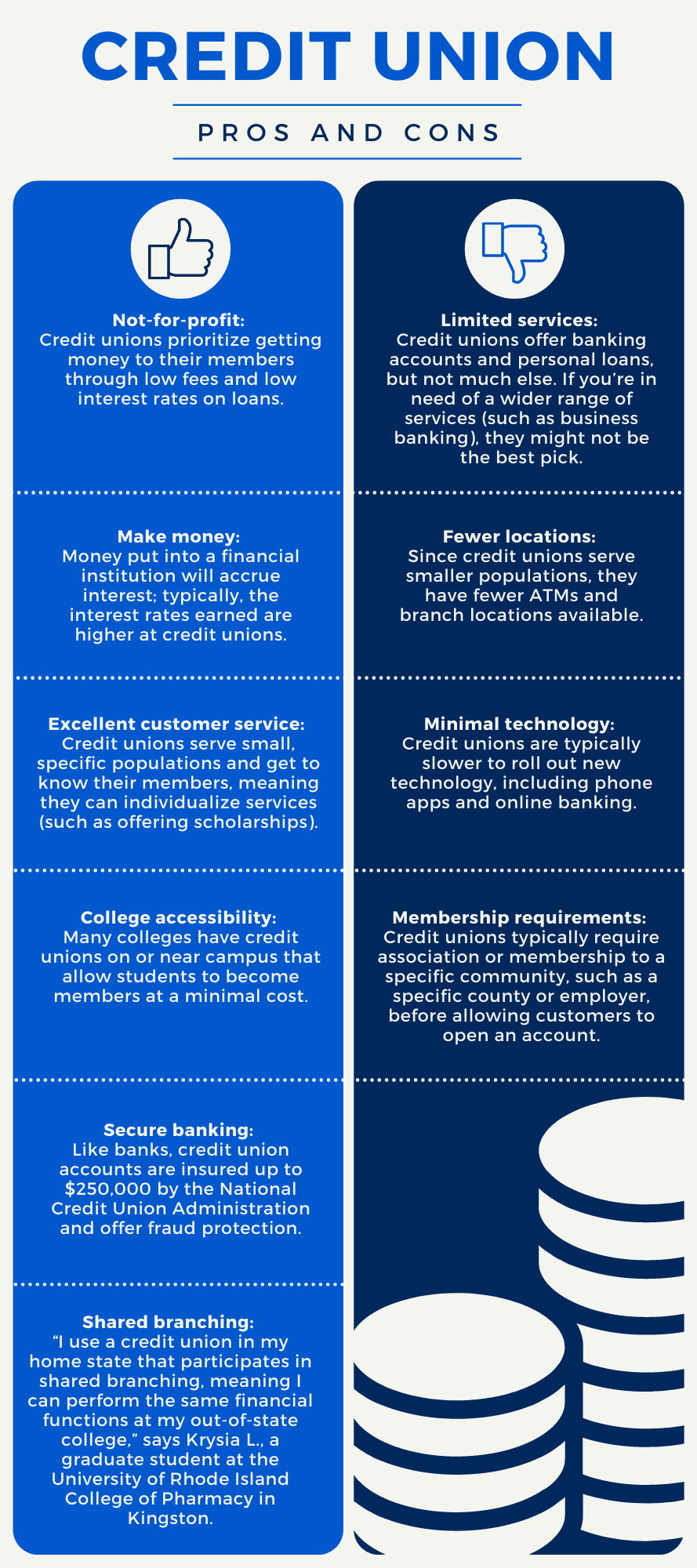The Ultimate Guide to Recognizing Lending Institution

Debt unions stand as one-of-a-kind monetary entities, rooted in concepts of shared support and member-driven procedures. Nonetheless, beyond their fundamental values, comprehending the elaborate operations of cooperative credit union involves a much deeper exploration. Unraveling the complexities of membership qualification, the evolution of services used, and the unique benefits they bring calls for a detailed examination. As we navigate via the intricacies of lending institution, an informative trip waits for to shed light on these member-focused establishments and exactly how they vary from typical financial institutions.
What Are Credit Scores Unions?
Lending institution are member-owned financial institutions that offer a series of banking services to their members. Unlike typical financial institutions, cooperative credit union operate as not-for-profit companies, suggesting their key focus is on offering their members as opposed to taking full advantage of revenues. Members of a cooperative credit union usually share a common bond, such as functioning for the very same employer, coming from the same community, or belonging to the exact same organization.
Among the essential advantages of lending institution is that they usually use greater rate of interest on interest-bearing accounts and reduced passion rates on finances contrasted to banks. Credit Unions in Wyoming. This is because cooperative credit union are structured to benefit their members straight, enabling them to hand down their incomes in the form of better rates and less fees. Additionally, lending institution are recognized for their individualized customer support, as they focus on building relationships with their members to understand their unique financial demands and goals
History and Evolution of Lending Institution
The origins of member-owned monetary cooperatives, understood today as lending institution, trace back to a time when areas looked for options to conventional banking organizations. The idea of debt unions stem in the 19th century in Europe, with Friedrich Wilhelm Raiffeisen frequently credited as the pioneer of the participating financial movement. Raiffeisen established the first identified lending institution in Germany in the mid-1800s, highlighting neighborhood assistance and self-help concepts.
The evolution of credit score unions continued in The United States and copyright, where Alphonse Desjardins developed the first credit union in copyright in 1900. Soon after, in 1909, the first united state cooperative credit union was formed in New Hampshire by a team of Franco-American immigrants. These early cooperative credit union operated the fundamental concepts of common help, democratic control, and member possession.
In time, cooperative credit union have actually grown in appeal worldwide because of their not-for-profit framework, concentrate on serving members, and providing affordable financial product or services. Today, lending institution play a crucial function in the economic industry, offering accessible and community-oriented financial options for individuals and services alike.

Membership and Qualification Standards
Membership at a credit rating union is typically restricted to people satisfying certain eligibility criteria based on the institution's founding concepts and regulative demands. Some credit score unions may only serve people that function or live in a certain location, while others might be tailored to employees of a particular business or members of a certain organization.
Additionally, lending institution are structured as not-for-profit organizations, suggesting that their main goal is to offer their members instead of produce profits for investors. i thought about this This concentrate on member solution typically equates right into more tailored interest, reduced charges, and affordable rate of interest prices on fundings and cost savings accounts. By meeting the eligibility standards and coming to be a member of a lending institution, individuals can access a series of economic product or services customized to their particular demands.
Solutions and Products Used
One of the vital aspects that establishes credit score unions apart is the varied variety of monetary services and products they offer to their members. Credit history unions normally supply conventional banking solutions such as savings and examining accounts, finances, and credit scores cards.
Moreover, cooperative credit union often give convenient online and mobile banking options for members to conveniently handle their funds. They may offer rewards such as shared branching, permitting participants to access their accounts at other credit unions across the country. Some cooperative credit union additionally supply insurance items like life, vehicle, and home insurance coverage to help members protect their properties and loved ones.
Advantages of Financial With Credit Score Unions
When taking into consideration banks, checking out the benefits of banking with debt unions exposes one-of-a-kind benefits for participants looking for tailored service and affordable prices. One significant benefit of cooperative credit union is their concentrate on individualized consumer service. Unlike big financial institutions, cooperative credit union are member-owned and focus on building solid partnerships with their participants. This implies that lending institution staff commonly have more tips here a much deeper understanding of their participants' financial needs and can provide customized options to aid them attain their objectives. In addition, credit history unions are understood for using affordable rate of interest on cost savings and finances accounts. Due to the fact that they are not-for-profit companies, lending institution can commonly offer lower financing prices, greater cost savings prices, and lower costs compared to standard banks. This can lead to considerable expense savings for members over time. Overall, financial with a cooperative credit union can provide a more personalized, cost-effective, and member-centric economic experience.
Conclusion
In verdict, credit history unions stand out as member-owned monetary organizations that focus on serving their members over optimizing earnings. With beginnings dating back to 19th century Europe, credit scores unions comply with principles of common support and member ownership.
Credit scores unions are check these guys out member-owned monetary organizations that use an array of banking services to their members. The principle of credit unions originated in the 19th century in Europe, with Friedrich Wilhelm Raiffeisen often credited as the leader of the participating banking movement.The advancement of credit scores unions proceeded in North America, where Alphonse Desjardins established the initial credit score union in copyright in 1900. Credit unions typically provide typical financial services such as cost savings and inspecting accounts, car loans, and credit history cards.When taking into consideration monetary institutions, discovering the benefits of banking with debt unions exposes distinct advantages for members seeking customized solution and competitive prices.